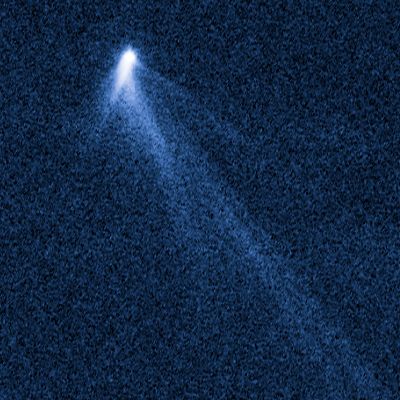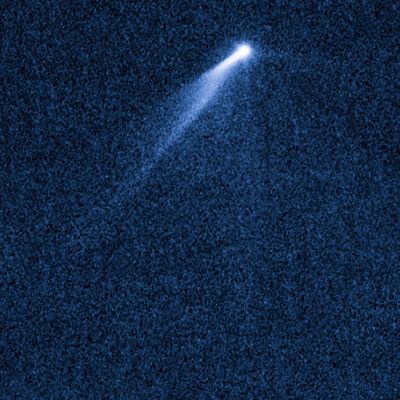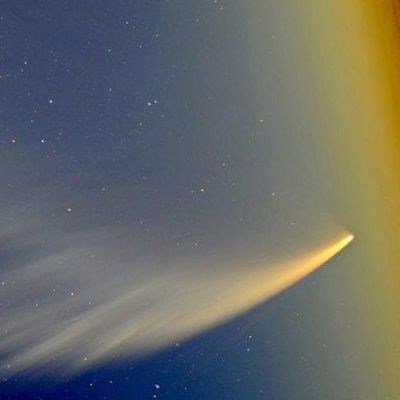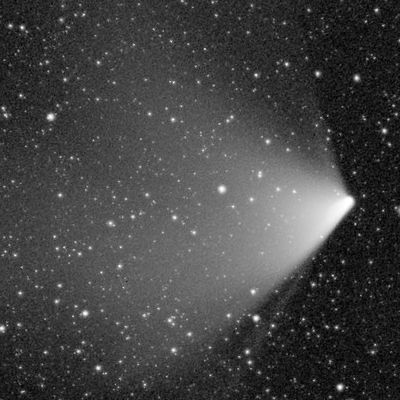Description
To precisely calculate the motion of dust particles in a cometary environment requires adavnced
hydrodynamic models, taking into account the interaction between gas and dust released from the surface.
In the tail, dust and gas are decoupled and the only significant forces affecting the grain trajectories
are the solar gravity and radiation pressure. Both forces depend on the square of the heliocentric
distance but work in opposite directions. The resulting force is equivalent to a reduced solar gravity,
and the equation of motion of a grain is simply:
mass*acceleration=(1-beta)*solar_gravity
beta is the ratio radiation_pressure/solar_gravity, and is inversely proportional to the size of grains larger than 1 micron.
From this relation, Finson & Probstein (1968) proposed a model which describes the full tail
geometry with a grid of synchrones and syndynes; lines representing respectively the
locations of particles released at a same time, or with the same beta. This model only considers
particles released in the orbital plane of the comet with no initial velocity, yet provides a very good
approximation of the shape of the tail, and has been used successfully to study many comets.
One of its many strengths is the possibility to date events in the tail, for instance to determine if
tail structures are related to outbursts or impacts on the nucleus, vs coninuous emission.
This webpage proposes a javascript inplementation of a FP-like model, using a new integration approach.
A detailed description of the model can be found in
Vincent et al (ACM, 2014).
References
- Finson, M. L., Probstein, R. F., A theory of dust comets. I. Model and equations, 154, 353–380, The Astrophysical Journal (1968).
- Vincent, J.-B., Comet-toolbox: numerical simulations of cometary dust tails in your browser, Asteroids Comets Meteors conference (2014), [pdf].
- Diagrams are rendered with the Javascript library Plotly.js.
Terms of Use
If you use this software, I kindly ask you to include the following aknowledgement in your publications:
Reference: Vincent, J.-B., Comet-toolbox: numerical simulations of cometary dust tails in your browser, Asteroids Comets Meteors conference (2014).




